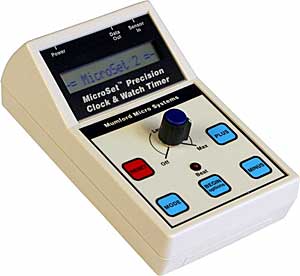|
Measuring Clocks and Watches
Introduction It’s hard to talk about measuring clocks and watches because it means different things to different people. For collectors, timing a clock might mean checking it every Sunday to see if it needs to be adjusted when you wind it. For repairmen, it might mean setting the beat and rate quickly so you can get it back to a customer. To the serious student of horology, it might mean comparing the rate with a precision reference, correlating performance with temperature and the barometer, or looking for anomalies and trying to explain them. Each application can be served with a different method or tool. Radio references People also use radio controlled “atomic clocks” as a reference. But these may not actually be very accurate. Many of them are free running quartz clocks of no particular accuracy that get corrected once or twice a day, if they can get the signal. Before the correction, there’s no guarantee that they’re accurate at all. Some of them are even designed to run slow to make correction easier.  The MicroSet clock and watch timer The MicroSet clock and watch timerMy approach has been to develop a custom electronic timing tool that’s tailored to the specialized tasks associated with measuring clocks and watches. The basic instrument is simply an accurate electronic clock against which you can compare the timepiece under study. In a way it’s no different than the jeweler’s regulator early clockmakers used as a reference. While the jeweler’s regulator ticked and recorded the passing of seconds, MicroSet ticks and records tiny fractions of a second. Our current design has a resolution of one quarter of a millionth of a second. These increments are added up for each beat of the clock or watch and displayed to show elapsed time. If all of this work is controlled by a programmable microprocessor, great flexibility is possible in terms of measurement parameters, automatic collection of data, and the results can be displayed in a variety of formats, or recorded on a personal computer. Furthermore, the tool can be programmed to perform related tasks towards the study of clock and watch behavior. This has proven to be a huge benefit, and MicroSet has grown many times as new capabilities came to mind.
---- Page 1 ----
|